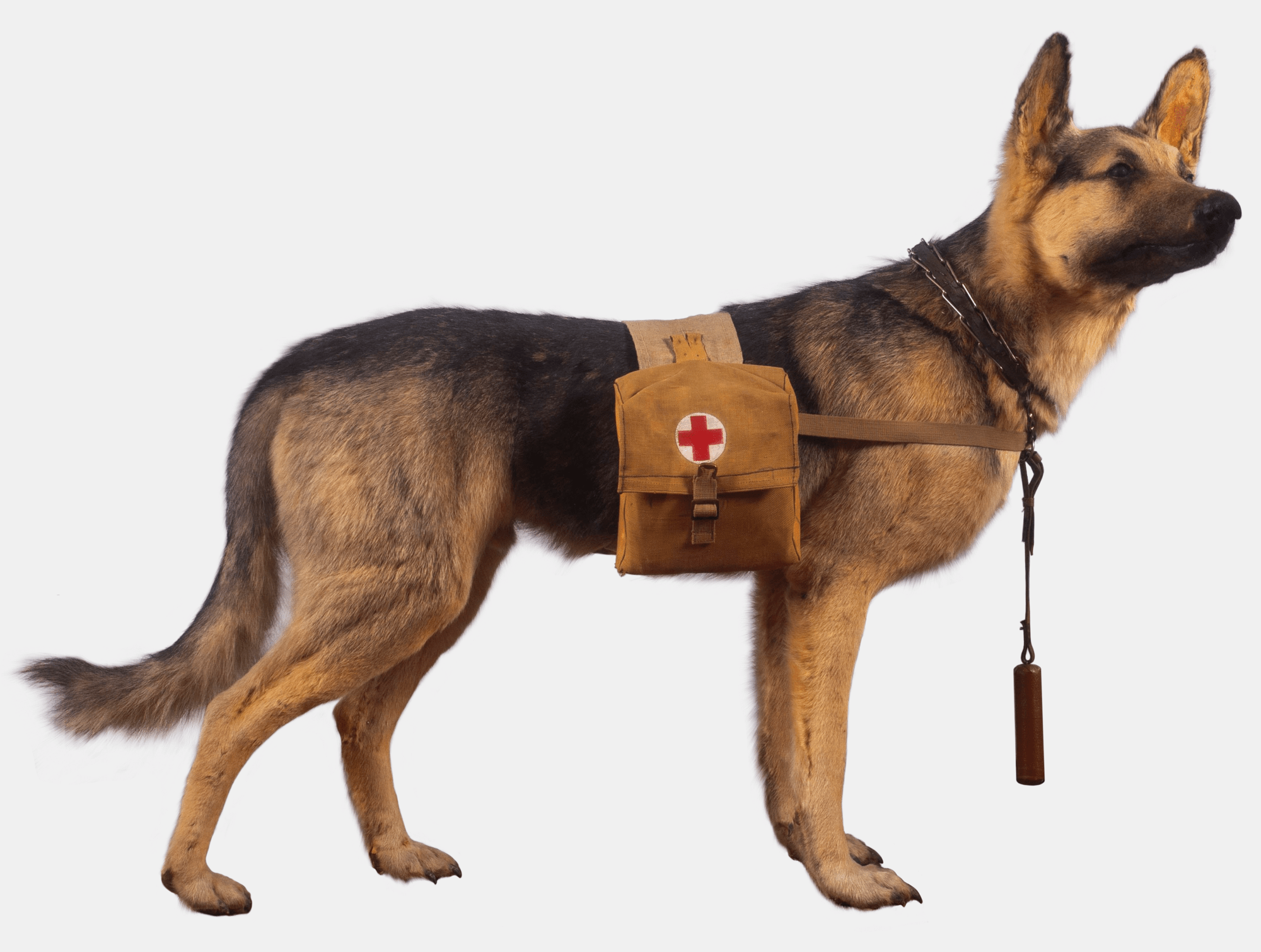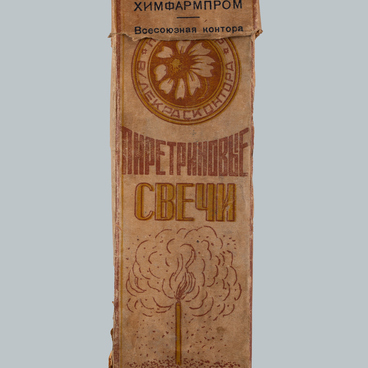“The Peaceful Instruments of Victory” exhibition hall houses a stuffed ambulance dog. During the Great Patriotic War, a dog named Alma saved about 300 soldiers. The dog was taxidermized after its death in 1952 at the request of the Military Medical Museum.
During battles, ambulance dogs worked alongside humans. Also known as mercy dogs, they were first integrated into military service in the late 19th century. Dogs were good at locating mines thanks to their keen sense of smell, at delivering messages thanks to their quick feet, and at transporting the wounded from the battlefield thanks to their strength and endurance. Their ability to save the wounded prompted military doctors to employ dogs.
The first ambulance dogs were tracker dogs trained by the police. They were already able to follow a wounded person’s trail and upon finding the wounded they would signal the location by barking. However, their services were soon abandoned. Tracker dogs were unfriendly, and the doctors, on the other hand, needed assistants who would not bite but lie beside the wounded and help them get warm.
Dogs were taught to move quietly around the battlefield, to lie down at the sound of gunfire, not to bark or howl at the sight of the dead, and to approach the wounded cautiously. The dog would crawl up to a soldier and let him take the first aid dressing package out of the saddlebag.
The wounded soldier would then put a piece of uniform or a cap into the mercy dog’s mouth, and the dog would return to the paramedics. It was a signal that the soldier had to be rescued from enemy fire. Later this method was considered unreliable. Instead of a piece of cloth, a dog was taught to clench the stick hanging from its neck. The signal meant that a wounded soldier needed an ambulance sled.
During the Great Patriotic War, ambulance dogs were harnessed to special rescue sleds used to evacuate the wounded from the battlefield. Several dogs could pull one sled at a time. The best breed for this purpose was the Malamute — a strongly built, broad-chested, and resilient dog. However, sheepdogs and huskies were also suitable for rescuing the wounded. Some of the mercy dogs were recruited from dog training schools and clubs, and others were brought by their masters.
During battles, ambulance dogs worked alongside humans. Also known as mercy dogs, they were first integrated into military service in the late 19th century. Dogs were good at locating mines thanks to their keen sense of smell, at delivering messages thanks to their quick feet, and at transporting the wounded from the battlefield thanks to their strength and endurance. Their ability to save the wounded prompted military doctors to employ dogs.
The first ambulance dogs were tracker dogs trained by the police. They were already able to follow a wounded person’s trail and upon finding the wounded they would signal the location by barking. However, their services were soon abandoned. Tracker dogs were unfriendly, and the doctors, on the other hand, needed assistants who would not bite but lie beside the wounded and help them get warm.
Dogs were taught to move quietly around the battlefield, to lie down at the sound of gunfire, not to bark or howl at the sight of the dead, and to approach the wounded cautiously. The dog would crawl up to a soldier and let him take the first aid dressing package out of the saddlebag.
The wounded soldier would then put a piece of uniform or a cap into the mercy dog’s mouth, and the dog would return to the paramedics. It was a signal that the soldier had to be rescued from enemy fire. Later this method was considered unreliable. Instead of a piece of cloth, a dog was taught to clench the stick hanging from its neck. The signal meant that a wounded soldier needed an ambulance sled.
During the Great Patriotic War, ambulance dogs were harnessed to special rescue sleds used to evacuate the wounded from the battlefield. Several dogs could pull one sled at a time. The best breed for this purpose was the Malamute — a strongly built, broad-chested, and resilient dog. However, sheepdogs and huskies were also suitable for rescuing the wounded. Some of the mercy dogs were recruited from dog training schools and clubs, and others were brought by their masters.


